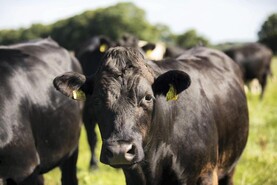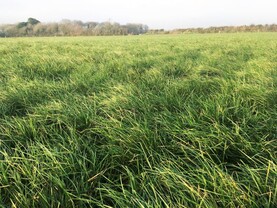We can so easily forget how important evaporation is in keeping land dry and grass grazeable. We still have strong weanlings out grazing good growths of aftergrass.
Up to now, with the dry spell, we had no great problems. But the heavy rain – we escaped the snow – over the weekend meant that the paddock allocated for grazing was reduced to a quagmire and the cold north-easterly wind and sleet made conditions for the cattle still outside miserable. The fact of the matter is I misjudged when pens in the slatted houses would be ready for the newly bought in cattle so here we are, coming up to Christmas and the finished beef bulls are still going to the factory in dribs and drabs while leaving the new weanlings waiting outside for accommodation.
In reality, the cold snap so far has done little harm insofar as I can judge.
The gaps in the oilseed rape are visible but I expect that the plants will have sufficient branching potential to fill in the spaces. The crop I am most worried about in a very cold snap is the winter oats which I am producing for the gluten-free market. In effect, Barra, the variety I have contracted to sow, is a spring variety and anecdotally can be badly affected by extreme frost. At this stage, the frost does not seem to have been severe enough to have caused any damage, but it’s only the start of winter.
The winter wheat and barley, in my view, gain from the frosty nights and cold weather, with aphids and incipient fungus diseases killed off or at least reduced in vigour.






 This is a subscriber-only article
This is a subscriber-only article









SHARING OPTIONS: